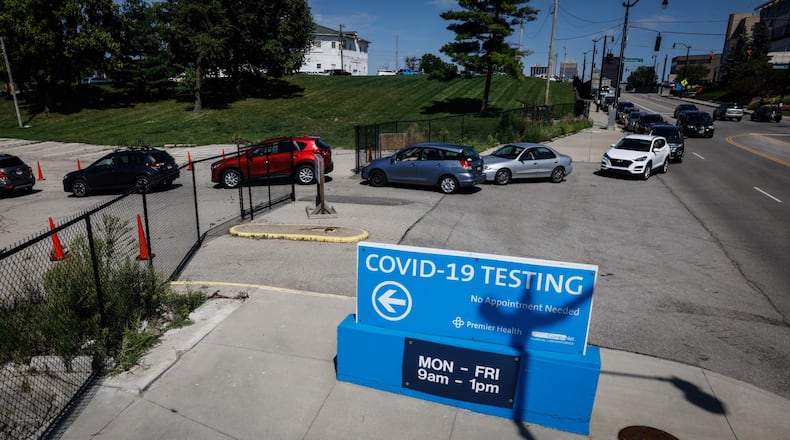The Ohio Department of Health reported 6,234 cases of COVID-19 on Friday. That’s down from the recent high on Sept. 10 when the state reported just over 9,000 new cases.
Over the last three weeks, the state has reported an average of 6,402 cases per day but averaged 5,690 cases a day in the past week.
“Looking at the numbers presently, it’s beginning to level off,” said Public Health-Dayton & Montgomery County Medical Director Dr. Michael Dohn. “The hope is that this is the beginning of a strong and steady decrease over the next months.”
However, Dohn cautioned that while case numbers might be leveling off, hospitalizations and deaths might remain high for a while because those are late complications of the disease. Dohn also warned that as we head into colder months, indoor gatherings are more likely to spread COVID-19.
Ohio reported 328 deaths from COVID-19 Friday, the most recorded in the state in three weeks. The state is averaging 53 deaths a day in the past three weeks.
In the west central Ohio region, which includes Shelby, Darke, Miami, Champaign, Preble, Montgomery, Clark and Greene counties, the number of patients hospitalized with COVID-19 recently peaked at 407 on Sept. 19, according to the Ohio Hospital Association. Hospitalizations have since dipped slightly but hovered around the high 300s with 379 hospitalized on Friday.
“Hospitalizations do look like they are plateauing, but they’re plateaued at a very high level,” said Sarah Hackenbracht, CEO of the Greater Dayton Area Hospital Association. “And so, our current concern is still managing this very high volume of hospitalizations that are COVID-19 patients, along with all of the traditional care and operations that our hospitals must provide.”
Hackenbracht said hopefully declining cases are a sign that hospitalizations will follow suit, but she pointed to the last surge of COVID-19 during which hospitalizations locally remained at a high level, consistently over 400 patients, in December and January for over six weeks.
“Now we are 20 months into this, the impact to our staff team continues to be much more significant than what I think the community truly knows and understands,” she said. “We continue to be concerned for the health of our children, and really do see that masking in schools is starting to have a positive impact on what we’re seeing for pediatric cases across the region for COVID, RSV and other transmissible airborne illnesses. So we appreciate the community’s effort in that regard and ask everyone to really keep it up. Everyone should be continuing to wear masks, and people should be continuing to get vaccinated.”
Vanderhoff said this wave has predominantly hit the unvaccinated.
“It has been the rare instance where we have had a vaccinated person in the hospital, and even rarer for a vaccinated person without other immune issues who ended up in the intensive care unit,” he said. “So what that tells us is our work is not done. Vaccination is still important. And it is our best key, our best personal and collective protection against being victimized by a subsequent wave of COVID-19.”

